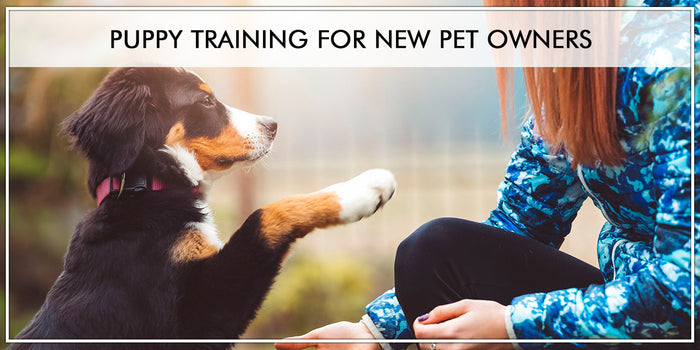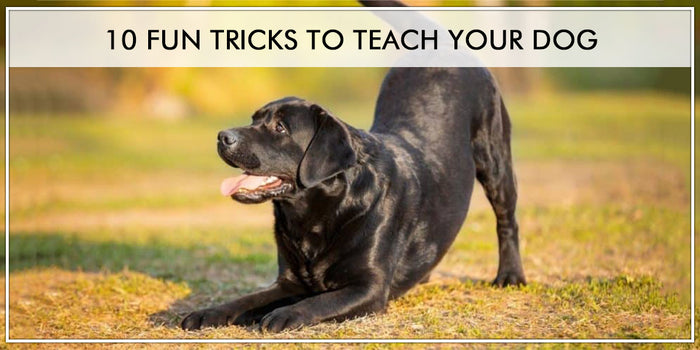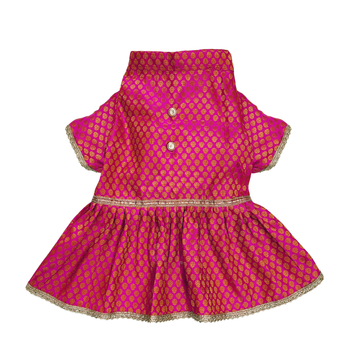A Guide to Behaviour Training For Dogs
People get jumped on, counter surfed or get their shoes chewed by dogs. We all adore our dogs, but not when they engage in these undesirable activities. Any dog, whether a puppy or an adult, can develop bad habits that we don't approve of. Here are some tips to assist you to stop doing things you don't want them to do.
Points to remember:
-
Training: It is critical to invest in training. It may not appear like teaching your dog to sit, come, or lie down has anything to do with barking, jumping, or chewing problems, but it does. Positive reward-based training teaches your dog that when he does what you want, wonderful things happen to him, improve your bond, and provide cerebral stimulation that will tire him out and make him less likely to misbehave. Each week, try introducing a new command while continuing to practise the old ones.

-
Exercise: Exercise aids in the release of energy. A happy dog is a tired dog. You're not giving your dog enough exercise if you're gone for 12 hours a day and your dog's stroll consists of a fast sprint into the backyard. Excess energy may be channelled towards things like chewing your shoes or dragging you around on the leash. Puppies have more energy and require more exercise than older dogs. Your dog's breed also has an impact on the amount of exercise he requires.If you don’t have enough time to exercise your pup, then you can take the help of various interactive toys or treat dispensing toys that will keep your dog physically active. Toys are a great way to give your pet the interaction and exercise they crave for even when you are not around. You can check out Pawsindia’s exclusive range of toys to get your pup a good session of exercise. We have a wide array of interactive and smart toys like Wicked Bone, Wobble Wag Giggle Ball, Wicked Ball SE, etc to keep your pup entertained and exercised.

-
Prevention: Prevent your dog from picking up harmful habits. Make your home puppy-proof. Shoes and toys should be put away. Gather up any fallen houseplants. Be sure to keep an eye on your puppy, even if you have a fence in place. It's easier to avoid harmful habits than it is to correct them once they've been formed.
- Reward: Encourage desired behaviour by rewarding them. Praise and pet your dog if he is sleeping peacefully instead of jumping or barking. Tell your dog what a terrific dog he is if he walks alongside you on the leash. It's easier for him to comprehend what you want him to do if you say "sit" rather than "don't jump" or "heel" rather than "don't pull."
- Consistency: The difference is consistency. If you don't feed the dog from the table but give him snacks from your spouse or children, he'll learn to beg. Or, if you ignore him when he jumps on you but others pet him, guess what he'll do. When it comes to dog conduct, everyone must adhere to the same set of regulations.
- What to do when your dog starts acting up?
-
Jumping: To avoid over-exciting your dog, the first step is to welcome him calmly. Because the goal of jumping up is to attract attention, refusing to do so is the most effective technique to deter jumping. Turn your back or stand like a statue. Ask for a sit if you've taught the "sit" command – a sitting dog can't jump. Then get down on your dog's level and provide him with the attention he craves. The dog should eventually initiate the sitting without being prompted. Use a crate, a "place" command, a baby gate, or keep your dog on a leash until he calms down to prevent him from jumping on visitors.

- Chewing: Chewing is a natural and important action for dogs, particularly when they are teething. Keeping your belongings out of your dog's reach is the most efficient strategy to prevent them from being destroyed. Offer your dog chewable objects that are age and size-suitable, but never old socks or shoes. Give him a lot of mental and physical stimulus. Teach him how to say "leave it."
-
Counter Surfing: Counter surfing can take a long time to cease once you've been rewarded. Maybe they'll give up if you can make sure they never, ever discover anything good there. When you're preparing food, put your dog in its crate or train them to stay in her "seat" on her mat. Teach the command "leave it." When you're making dinner or cleaning up, never feed your dog leftovers from the counter.

-
Leash Pulling: Try not to pull your dog; if you tug on the leash, your dog will instinctively pull back. Praising, clicking, or presenting goodies to your dog for walking gently on the leash when he walks by your side is a good way to reinforce this behaviour. No matter how fascinating the surroundings are, he must learn to pay attention to you, therefore it's a good idea to start practising where there are minimal distractions. You must stop if he pulls. You can also call him back to your side by suddenly turning around and completing a 180. Don't allow him to drag you, and make sure others who walk him don't let him pull as well.

- Barking: It's an unavoidable fact that dogs bark, but excessive barking can soon become a nuisance. Teach the command "quiet" or "enough." Then you calmly say "quiet" as soon as your dog begins to bark. You can praise him or give him a treat if he stops barking and comes to you. Remember that the more ecstatic you become, the more likely your dog will believe there is something to bark about. Consider why he's barking – perhaps he's bored, wants exercise, or is fearful of other dogs and people and requires more socialisation. If he's yelling for attention, don't give it to him until he's calm.
Dogs are creatures of habit, and breaking them requires a significant amount of effort. Your dog wants to know what you want him to do, but it will take time and patience to make your goals clear and guide your dog away from undesirable habits and toward more desirable ones. A certified dog trainer can assist you in getting started.
Puppy Training For New Pet Owners
Training helps your puppy develop into a confident, well-behaved dog who can accompany you to a variety of situations. Play...
on
10 Fun Tricks To Teach Your Dog
Teaching your dog, a new trick is always easier than you think. Dogs, in fact, like the challenge of learning...
on


































